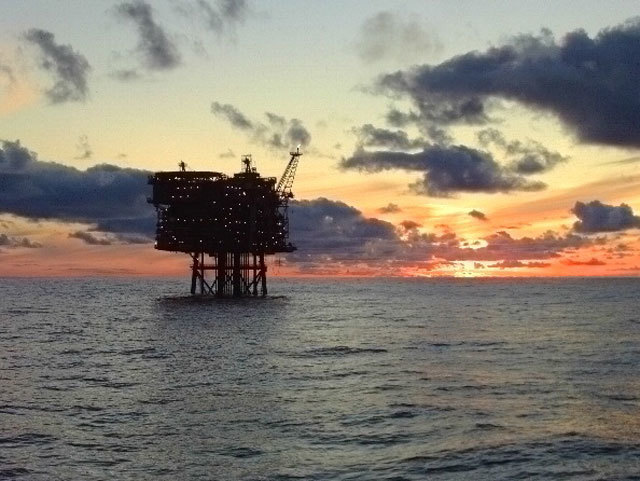
Raymond Pirie specialises in bugs and has done for decades, starting his career at the Rowett Research Institute in Aberdeen during 1968 before throwing his lot in with the oil industry during the early years of North Sea oil.
In fact, he has been with Intertek for more than 30 years, though there was an interruption when he was MD at Smedvig Resource Management, 1992-97.
Intertek is in the testing, inspection and certification space. It is an international organisation present in more than 100 countries with around 35,000 staff.
Pirie’s part of the business, based in Aberdeen, concentrates on exploration and production services.
“Largely speaking we’re an analytical services company. We thrive on analytical science to help our customers in the oil and gas space and, in the UK, that means some specific challenges for ourselves and the customers we hope to add value to,” Pirie told Energy.
“One example is the impact that microbial degradation can have on existing assets. This is a particular issue in relation to mature assets; but it applies equally well to new fields being developed.
“Many people outside this industry don’t realise the significance of microbial growth in degradation of reservoirs and therefore assets.
“Here at Intertek we are very much aware that good bug management is an important feature of every producing oil and gas asset.”
Anyone who has experienced diesel fuel contamination because of fungal filament growth has had a minute taste of what can happen to an oil/gasfield. This is a critical reason why diesel fuel systems must be kept meticulously.
It’s a very similar process for oil and gas fields. Bugs thrive and grow in an environment where there is some oil and water. And water is present in fuels like diesel.
“Offshore it’s significantly more detrimental because the growth of bugs in a water system can have a dramatic impact. As bugs thrive, in many cases they produce hydrogen sulphide (H2S) which is acidic.
“The amazing thing is that most reservoirs start out sweet. But within a relatively short space of time most of them will sour and that is because of the production systems, including injection of chemicals and water downhole that then leads to bacterial infestation.”
Pirie’s team uses analytical science to establish what types of bacteria are present and how to mitigate such issues. They’re often asked by their clients to look at a range of chemicals that can be used to remove or reduce the impact that these bugs have.
This sometimes includes predicting where souring could become a problem. Sometimes it can involve examination of topsides water systems to determine how the bugs can be removed before starting to inject water into the reservoir.
The application of analytical science to offshore bug management is an incredibly important element of maintaining production assurance.
“That’s where we come in,” said Pirie.
“It becomes increasingly important in mature provinces like the UK North Sea because of the need to sustain production and push back field abandonment and assure longevity of infrastructure by reducing and, if possible, eliminating corrosion by removing bugs as far as possible.”
Complicating matters further is that major export infrastructure such as the Forties pipeline system hosts an ever-changing cocktail of hydrocarbons being transported to market.
Pirie: “The Forties pipeline has more than 80 entrants. Each has a different quality of crude.
“Therefore it is absolutely vital that we understand the volumes and qualities of crudes that are being produced so we can assign the value back to the respective owners of those crudes being transported. We also have to understand the impacts of those individual crudes on the pipeline and of any vessels they come in contact with.”
Does that mean it is contractually critical that whoever is putting hydrocarbons into an export system is putting clean hydrocarbons into that system?
“Yes,” was the answer.
“It’s about the legal responsibility to ensure that crude to be transported is, in fact, fit for export, so to speak. It must fit the pipeline specification.
“But they also have a personal responsibility to ensure that any new wells that come onstream are not going to have a detrimental impact on the production systems that they are feeding into.
“That’s one of the main reasons why companies are very interested in understanding what happens within a reservoir and how flow assurance may be impacted by things like bugs, also waxes and asphaltine deposition that can clog up a pipeline.”
When the North Sea story began half a century ago it was no more complicated than drilling a hole and seeking to produce viable hydrocarbons.
It is only over time that the importance of clean management of reservoirs became recognised. And the regulator DECC has a crucial role to play.
“We are often asked to help DECC monitor individual producing companies to make sure that the systems in place are sufficient to look at the environmental impact of various products . . . discharges into the air and/or sea; and that sampling regimes and methodologies adequately reflect the latest standards set,” said Pirie.
“Industry standards are certainly tightening. There’s a big move towards finding or at least identifying to much lower concentrations, the various contaminants that can be discharged into the sea.
“So not only do we look at the total hydrocarbon content of what is being discharged, but the types of compounds present in those discharges.”
How significant is the bugs issue on the UKCS?
“I would suggest that it is extremely significant to the extent that if we completely forgot about good bug management and the addition of biocides to control them, there would be a very large impact on the ability of companies to produce hydrocarbons in the quantities that they currently do,” said Pirie.
He added that he was sure that most operators recognise the problem, actively work to mitigate the impact of bacteria and refrain from cost-cutting that might have an impact.
Recommended for you
